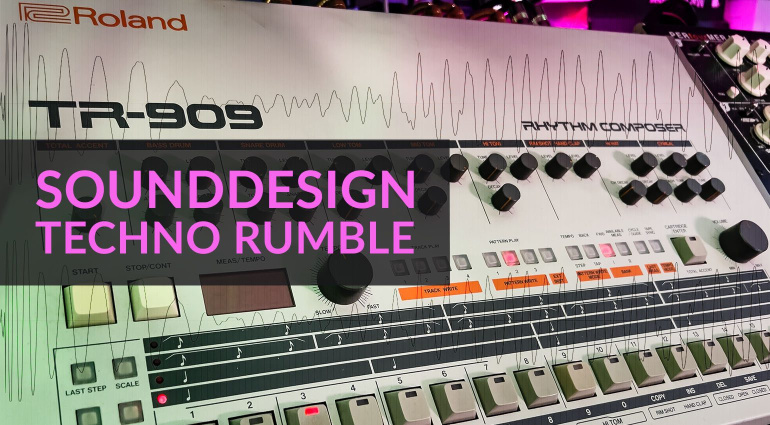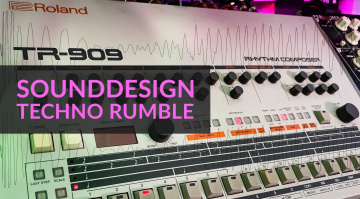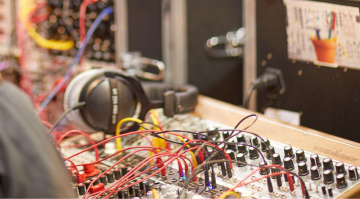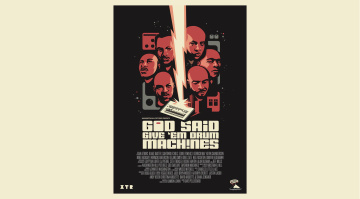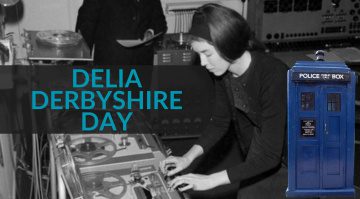Techno Rumble in Ableton Live – Made Easy!
The Perfect Sub-Bass for the Next Rave
Techno rumble is the most important element of techno music. In short, it is a sub-bass effect for the kick drum. This plays an absolutely crucial role in techno. But how is this effect created? There are many options and effect plugins that can do the work for you. Unfortunately, however, they offer only a few possibilities for intervention. In this sound design workshop, I will show you how to create the techno rumble in Ableton Live. Just like an electronic music producer!
How to Create Techno Rumble in Ableton Live
Techno Producers, Sound Design is Key!
Whether you’re in a club, wearing headphones, or using your own PA system, the kick drum and bass in techno need to “boom.” That’s the most important element of this genre. It also needs to be in the groove. But how do you create that kind of sound? There are tons of loop and sample libraries on the market, as well as online platforms peppered with one-shot sounds and VST plugins that produce a brutal kick including sub-bass. However, if you want to take it a step further and tweak the sound or build your own groove from scratch, you’re out of luck.
That’s why I’m going to show you a simple way to create your own kick bass groove using Ableton Live‘s built-in devices (I use Ableton Live Suite 12).
Tip: This workshop can also be replicated in other digital audio workstations (DAWs).
Rumble – Here’s How!
In “expert circles,” this special sub-bass that merges with the kick drum to create the driving techno groove is called a “techno rumble.” First, we need a kick drum. A kick sample from the legendary 909 – you can find this in any sound library or perhaps you have a real Roland TR-909 – will definitely do the trick, but any other kick or kick synthesizer will work just as well. Load the sound into a Simpler MIDI device or drum rack, or place the synthesizer in a MIDI track.
Then, create a “four-on-the-floor” MIDI pattern and play it back at a tempo suitable for techno. This tempo is important for modeling the perfect groove in the next steps.
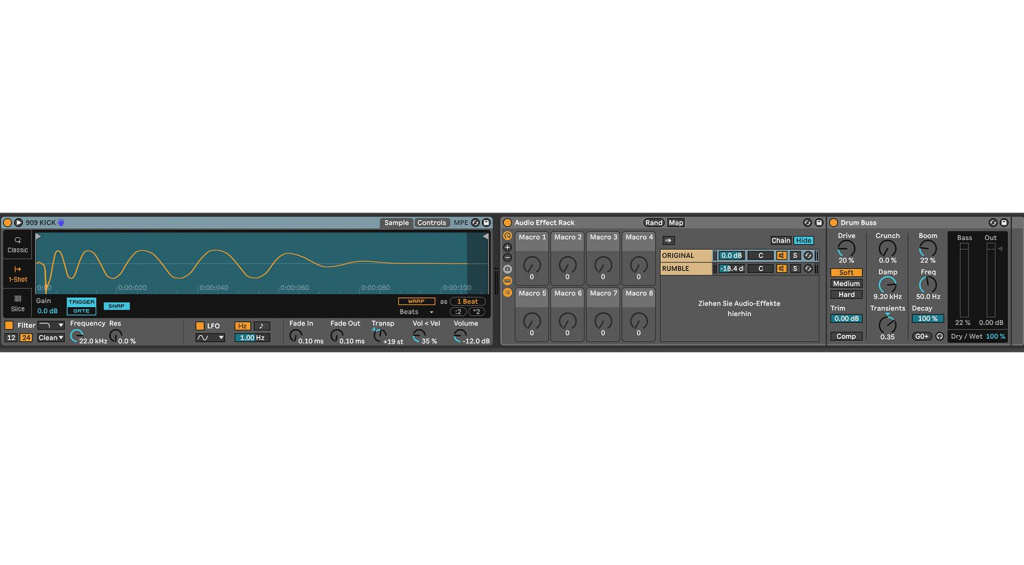
Next, add an Audio Effect Rack to this track. This rack allows you to mix different effect chains together. In this case, you need one chain for the “dry” kick signal and another for the rumble effect. Click the “Show/Hide Chain List” button on the left side of the Audio Effect Rack to create effect chains.
An empty field will appear on the right side where you can right-click to create a chain. Repeat this process twice. Then, you can optionally rename the new chains “Original” and “Rumble.” If you’re feeling adventurous, try creating three or more chains with different effects – it’s worth it!

The Reverb Creates the Techno Rumble
Now, let’s move on to the kick drum sound. The Drum Buss is a cool, all-in-one tool for creating a fat kick. It allows you to adjust the “fatness,” transients, and bass content of the sound to suit your taste and match the source material. All you have to do is experiment with the controls. You’ll soon discover which settings produce your desired kick sound. I don’t think this “dry” chain needs any additional effects. You can mute this chain for now.
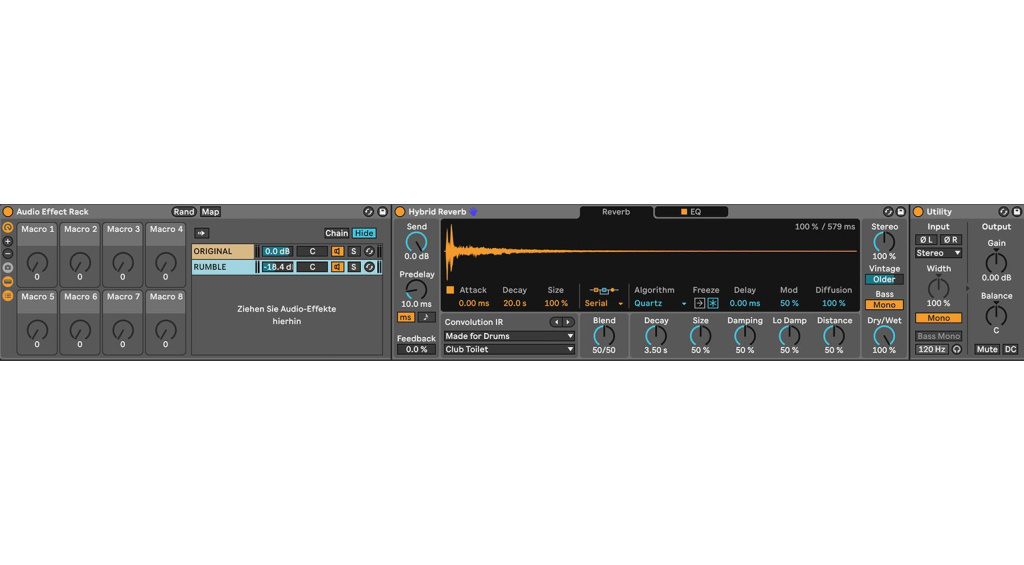
The “Rumble chain” represents the wet part of the effect. Click on this chain once to select it. Now, we will build a sub-bass with lots of groove from the original kick sound. First, lengthen the kick and give it a “boom” sound. This effect is created with a reverb.
For this workshop, I’m using Live’s Hybrid Reverb. The advantage of this is that you can load your own impulse response (IR) samples to further customize the sound. However, the package includes several reverb impulse responses (IRs). You can also try out other reverb plugins.
In this device, we set the effect amount to 100 percent “wet” at the bottom right. This ensures that the original sound does not enter the output of the effect chain. Next, we place a Utility device behind it and click “Mono” to eliminate the side information of the reverb, as it is unnecessary for a sub-bass.
To the right of that, we add a Saturator to fatten the effect and add more “grittiness.” To tame the audio signal, we now need an equalizer (EQ Eight). Setting a low cut at around 20–25 Hz and a high cut at 150–200 Hz should give you an idea of the direction we want to go in.
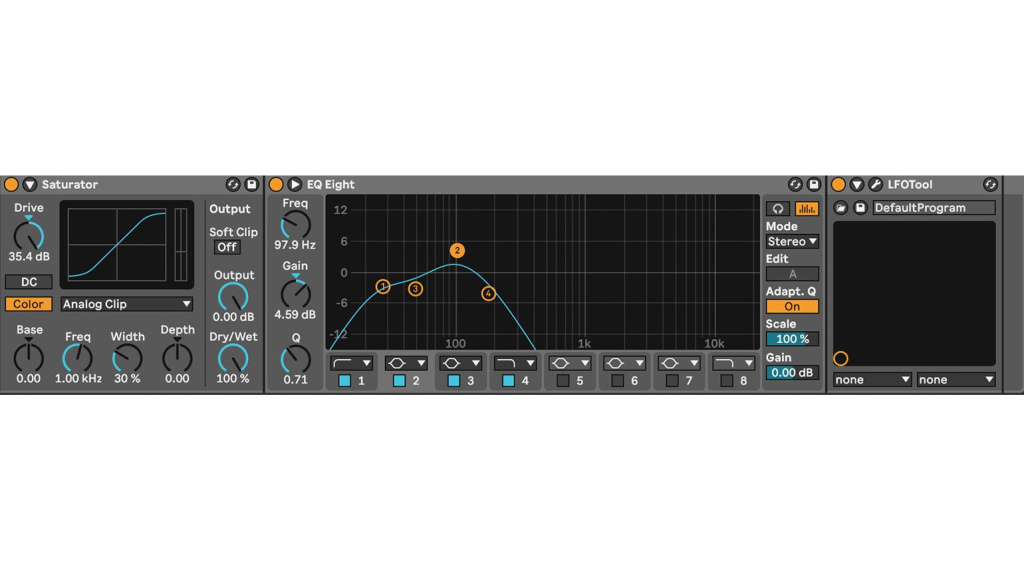
Want to Take Your Sound Design Even Further?
You can use additional bands to further shape the techno rumble effect. For example, you could give it a slight boost at 100 Hz. Then, reactivate the “original chain” and mix it in. Finally, place a volume ducker at the end of the rumble chain to fade out the sub-bass rumble whenever the kick drum kicks in, i.e., on the 4/4 beat. You have to listen to this, including the kick. You can create this effect with another Utility device and an envelope modulator on the kick drum clip. Then, you can freely draw in the groove of the rumble and determine the volume yourself.

Finally, I put another Drum Buss behind the Audio Effect Rack to blend the kick and techno rumble further. You can also use this technique to fine-tune the overall sound of your track.
Tips & Tricks for Adding Even More Groove With Techno Rumble
Try using different impulse response (IR) samples in Hybrid Reverb to get different techno rumbles. You’ll see that a different reverb creates an entirely different rumble groove. Changing the equalizer, saturator, and envelope for volume modulation (sidechain effect) will also produce a different rumble sound.
Ultimately, the right mix of the original kick and techno rumble bass makes the difference. As with all sound design workshops, practice makes perfect! Have fun experimenting! But be careful: Listening at high volumes for long periods of time can damage your hearing.
Pro tip: You can use third-party tools, such as VolumeShaper or LFOTool, as envelope plugins for the SC effect.
Do you have questions about the Techno Rumble workshop? Do you have ideas or suggestions for additional sound design workshops? If so, write to us in the comments section below.
More Information
*Note: This Techno Rumble workshop contains advertising links that help us finance our site. Don’t worry – the price for you always remains the same! If you purchase something via these links, we receive a small commission. Thank you for your support!

 4,3 / 5,0 |
4,3 / 5,0 | 